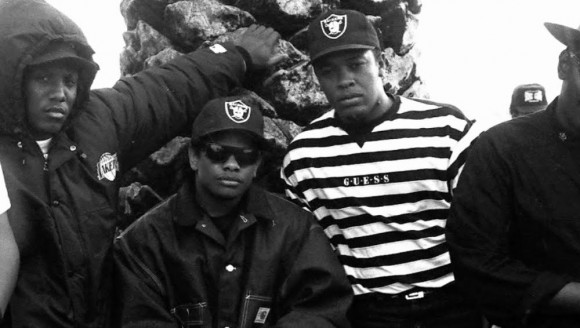My priorities are my family, my friends, and my Oakland Raiders, in that order. I bleed silver and back, so when I stumbled across this documentary about the 13 season that the Raiders played in Los Angeles from 1982 – 1994, I really couldn’t help myself. This documentary tells the fantastic sports story of how the greatest football team ever (in my humble, biased opinion) helped to create a new, hip-hop culture in Los Angeles that has stayed with the city ever since.
Disregarding my passion for the Raiders, this documentary is still extremely well made. It’s sentimental, funny at some parts, serious at others, and interesting the entire way through. Lifelong Raiders fan and rapper Ice Cube conducts some of the interviews with famous fans such as Snoop Dogg, former players, former coaches, and the general manager at the time the documentary was made, the infamous Al Davis. Cultural Los Angeles figures of the 80s and 90s in were also interviewed and gave insight into how the Raiders truly affected the creation of a Los Angeles culture that wasn’t about movie stars and palm trees.
The documentary follows the history of the Raiders, but it also follows the history of Los Angeles during the rough times that the city went through in the 80s and the even rougher times in the 90s. It’s a very honest depiction of the struggles within the city at the time and how those struggles developed the prominent hip hop culture in Los Angeles. Young people struggling to survive in dangerous LA neighborhoods looked to the Raiders as a symbol of a football team that was just like them; the players were ex-cons, tough guys, and black athletes who could relate to their fans and that inspired music from groups like N.W.A. LA rappers rapped about what they knew, and the Los Angeles Raiders played what they knew. What was coming of LA was honest and because of this the relationship between rap, football, and street culture in Los Angeles is one that can never be broken. I’ve always been a Raiders fan, but I never knew about the connections between authentic 80s Los Angeles hip hop and the Oakland Raiders. It’s all incredibly interesting.
This documentary made me infinitely more proud to be a Raiders fan, something I thought was impossible. The former Los Angeles Raiders and the current Oakland Raiders are more than just a football team – they are a symbol of west coast culture. And it isn’t the sunshine and Hollywood culture that the Golden State always seems to portray, it is the honest, rough-around-the-edges, gang affiliated culture. It is the culture that shined a light on some of the real issues going on in Compton and Los Angeles during hard times, but also tried to bring a struggling city together through music and football when no one else would. The best quote of the documentary comes from Mike Ornstein speaking about the Raiders in the 70’s and 80s, “We were thugs. And we won.”
If I could make this documentary mandatory to watch, I would. It’s really a wonderfully made film telling an awesome story. It’s not too much about football, LA, or hip hop; it balances the three perfectly and tells an honest story. If this is a subject that interests you, definitely watch this documentary on Netflix. Just win, baby!

